Sri Lanka is home to something like 125 species of mammals. In most places we didn't go out of our way to search for them, but we did take a couple of trips specifically to find some of the most well-known mammals.
At Yala National Park we drove around in a safari vehicle with the major goals of finding sloth bears and leopards. Along the way we saw a number of smaller mammals, including quite a few of these distinctively marked hares.
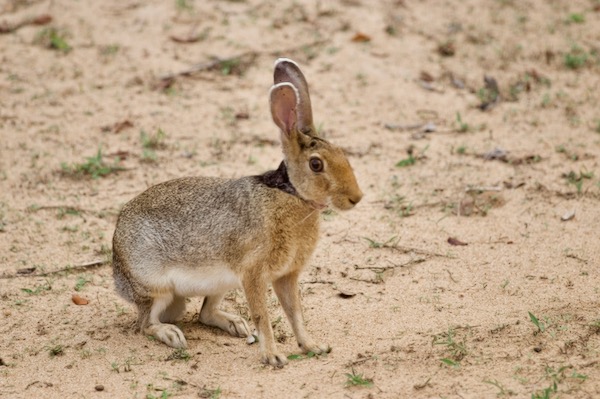
We saw one jackal prowling in thick grass, looking nearly identical to the North American coyote.
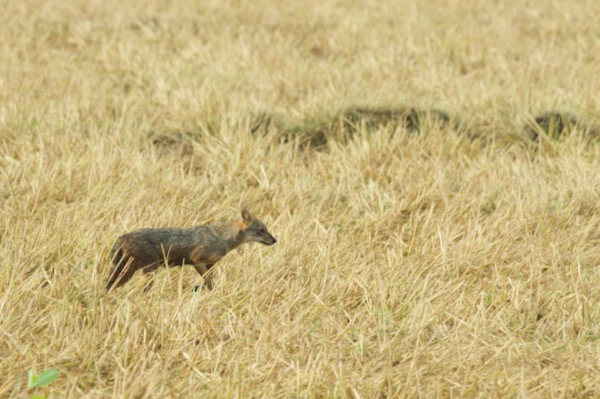
We saw several mongooses slinking around at Yala, mostly as they slunk out of sight. The most distinctive one was this Stripe-necked Mongoose.
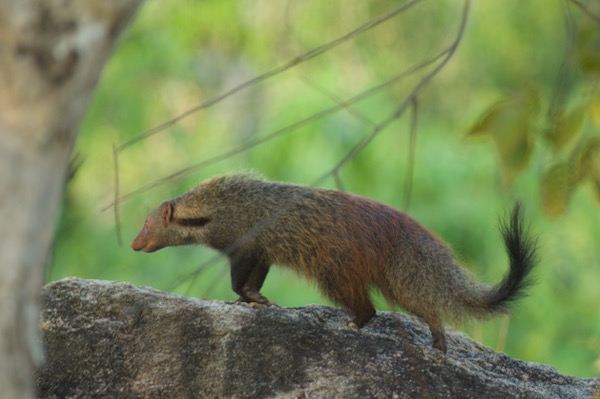
Deer were common at Yala, and wary. They cautiously snuck up to this mud hole for a drink, ready to spring away at the slightest disturbance.
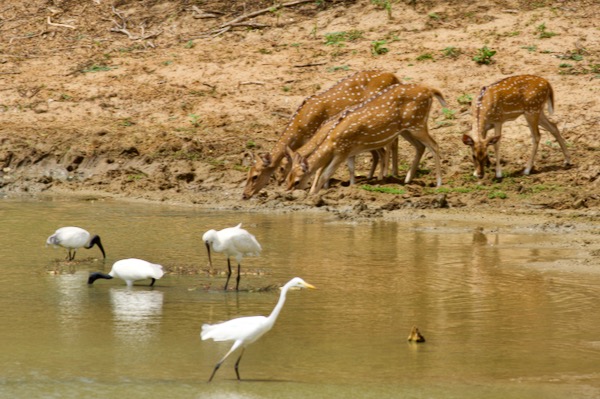
Water buffalo are easily seen at Yala. Some people will tell you that they are Wild Water Buffalo (Bubalus arnee). Other people will tell you that they are feral Domestic Water Buffalo (Bubalus bubalis), whose scientific name looks like it contains a typo but doesn't. And the rest of the people who care about these things will tell you that both species are present. All of these people will argue with each other endlessly on the Internet. My guide Udaya Chanaka identified this individual as a Wild Water Buffalo so that's what I'm calling it here.
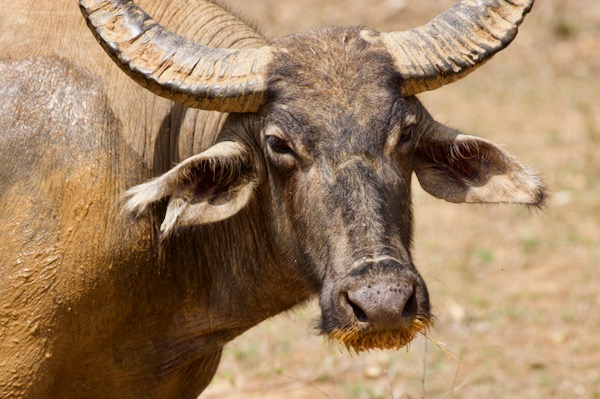
Two of the big mammals to see in Yala are sloth bears and leopards. We failed to run across a sloth bear, but we did manage to see one leopard as it approached the road. It might have continued to get closer but a couple of other safari vehicles noticed our vehicle stopping for a view, and when they drove over quickly the big cat turned and sauntered off.
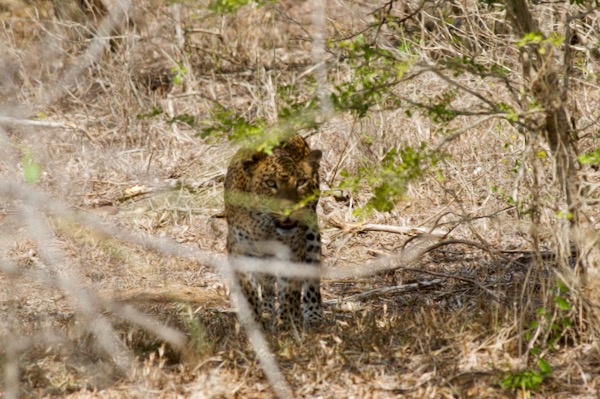
The biggest of the big mammals in Sri Lanka are of course the elephants. They can be found at Yala also, but Chanaka knew of a better place to view them: a newly designated national park in the central hills, where each afternoon many elephants would mosey out of the forest into a clearing around a lake. There they would eat the greenery and cool themselves off in the lake.
We visited this park on an on-and-off rainy afternoon. We parked our jeep in a spot close to the clearing, had a nice lunch, and waited for the elephants. At about 4:00, they started meandering out of the trees. First one, then a few, soon many. We roughly counted about one hundred elephants in about two hours. Chanaka told me that the reason we saw so few was that the rainy conditions meant they wouldn't feel as much need to come to the lake for a drink. Apparently on a typical day we would have seen twice as many.
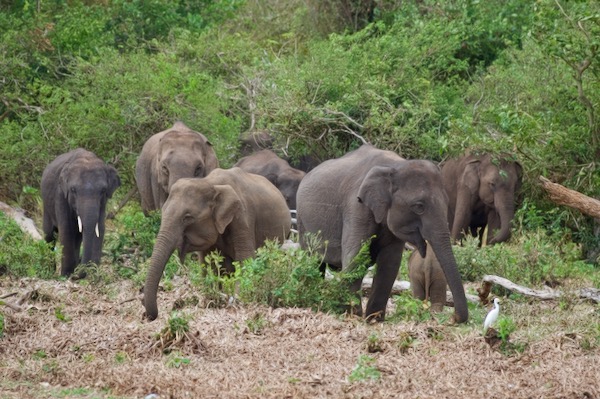
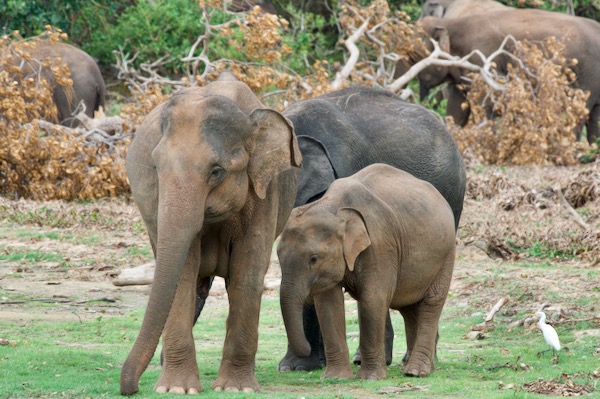
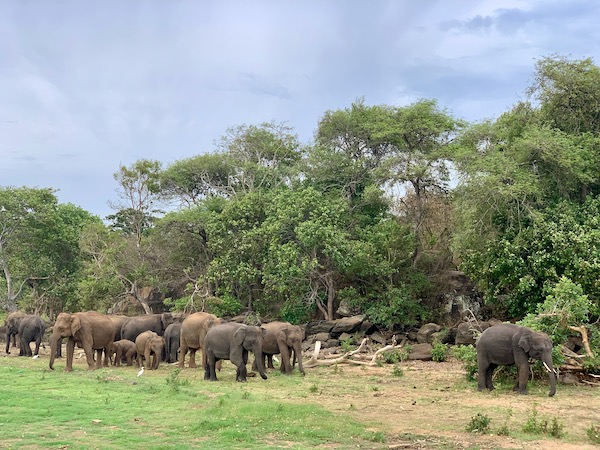
Three species of monkeys live in Sri Lanka. The most widespread and easily seen are the Toque Macaques, which are endemic to the island. The easiest way to distinguish the three subspecies is by their hairstyles. The disheveled early-Beatles look here is the mark of the Highland Toque Macaque.
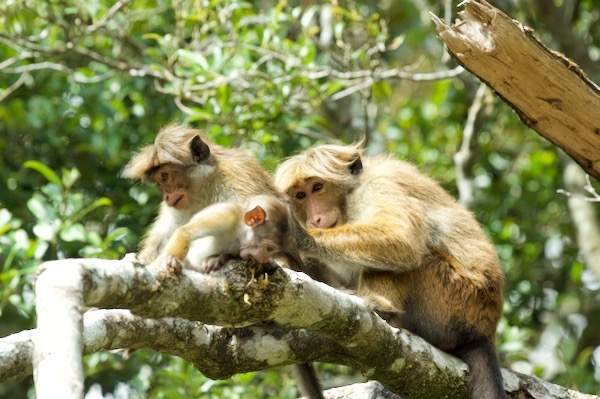
Something tells me these macaques along the side of the road have become accustomed to both traffic and handouts.
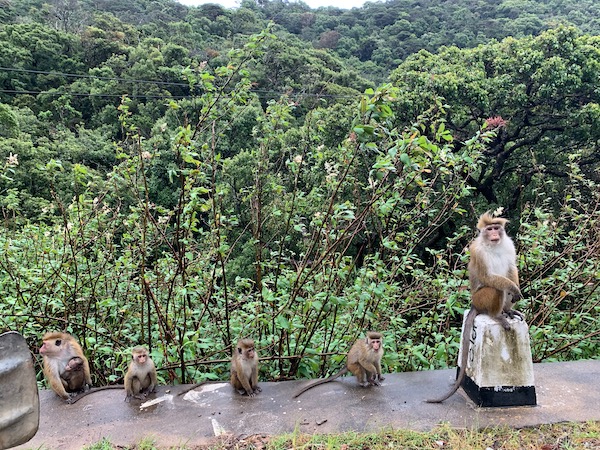
Tufted Gray Langurs are not endemic to Sri Lanka, but the ones in Sri Lanka belong to an endemic subspecies.
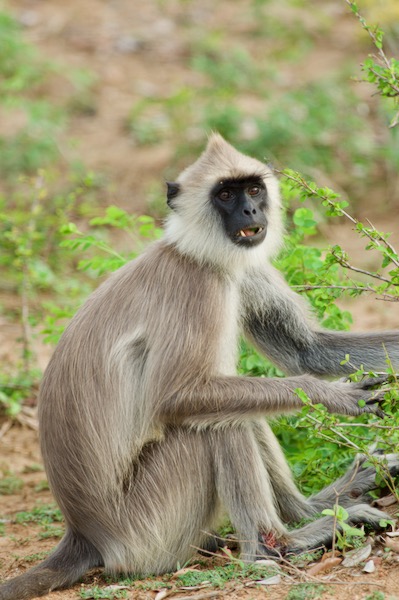
The third and cutest of the three monkey species is the Purple-faced Langur, which is another Sri Lankan endemic. It is divided into four or five subspecies, depending on to whom you listen. We only saw these in one place.
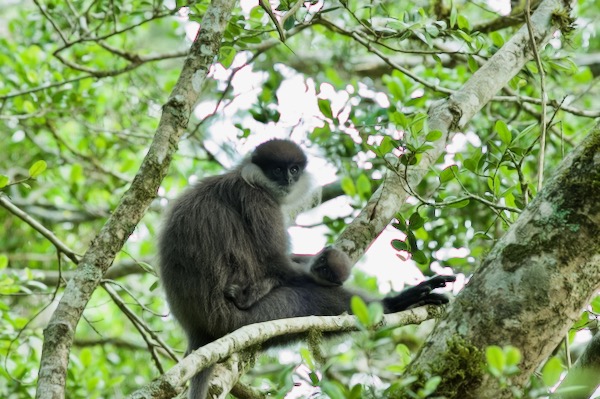
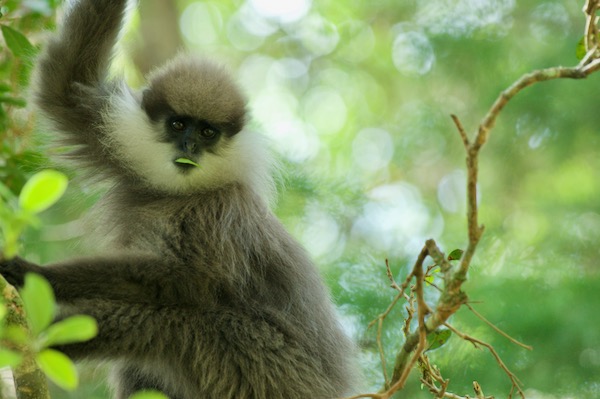
By far the best primate we saw in Sri Lanka was this adorable slender loris. We saw the eyeshine of several individuals, usually very high up in the trees. But the one pictured here was spotted just a few feet off the ground, and climbed over onto a handheld branch for a quick photo session. This is quite possibly the cutest animal I have ever seen.
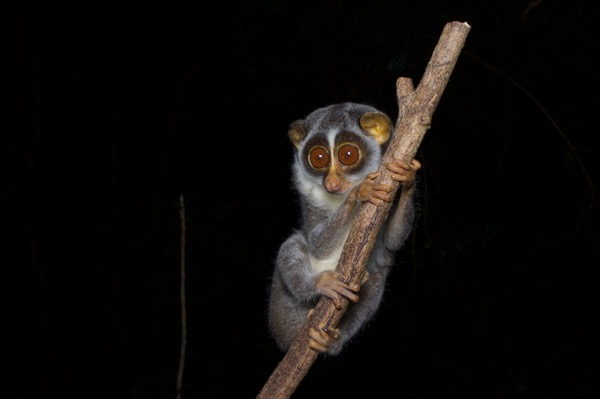
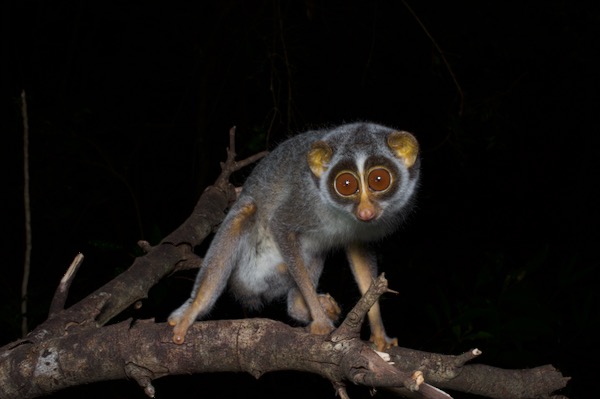
Next: Archosaurs & Turtles